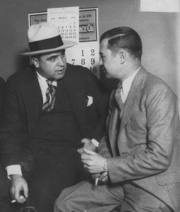 |
| Section of the Bayeux Tapestry |
This was the day that we didn't drive anywhere. Bayeux is an amazing town full of its own wonders, museums, sights, great shops, and restaurants. We started with a tour of the famous Tapestry that depicts the events of the year 1066: The lead up to and the Battle of Hastings which resulted in the Norman Conquest of England. For those of you who are unfamiliar with this, it is a fascinating chapter and a pivotal point in history which had a profound and lasting impact upon England. I won't bore you with details, but if you would like to learn more, here is a great link:
https://www.britannica.com/event/Norman-Conquest Also, here is a link to information about the Tapestry, which is a fascinating piece of antiquity; an embroidered cloth nearly 70 meters long and 50 centimeters tall: https://en.wikipedia.org/wiki/Bayeux_Tapestry After touring the tapestry with a headset and narration, we walked to the Memorial Museum of the Battle Of Normandy. It is a comprehensive display of vehicles, weapons, tactics and regalia used by both the Germans and the Allies. It is one of many museums in Normandy but by far one of the best. We then took a short walk to the European Cemetery, another somber and beautiful place honoring the dead on the European allied side (Canadians were buried there also). In total, the cemetery contains 4,648 burials.
Bayeux was one of our favorite places and we are so happy that we stayed there the longest and made it our "base of operations," for our tour of Normandy.
 |
| Museum of the Battle of Normandy, Bayeux, France |
 |
| Allied Uniform Display |
 |
| Weapons display |
 |
| A German Artillery Piece |
 |
| German Uniform display |
 |
| Allied Self-propelled artillery |
 |
Typical Mounted Norman Cavalryman
Museum of the Tapestry |
 |
The Normans were Descendents of Vikings or "Northman" who settled
on the coast, hence the name "Normandy." The ships used in the
invasion of England were very much like the Viking longboats. |
 |
| German self-propelled anti-tank weapon |
 |
| A Norman foot soldier |
 |
| The Battle of Normandy Museum, Bayeux, France |
 The Bayeux Memorial was erected in white stone facing the cemetery. The Latin epitaph along the frieze of the memorial is reference to William the Conqueror and the Invasion of England in 1066. The translation reads: “We, once conquered by William, have now set free the Conqueror’s native land.” The Bayeux Memorial was erected in white stone facing the cemetery. The Latin epitaph along the frieze of the memorial is reference to William the Conqueror and the Invasion of England in 1066. The translation reads: “We, once conquered by William, have now set free the Conqueror’s native land.” |
|

 |
| Poppy flower wreaths |

 |
| Royal Canadian Air Force Pilot's grave |
 |
| Crew members who died in Aircraft shot down were buried side by side |
 |
| A Polish soldier's grave |












 The Bayeux Memorial was erected in white stone facing the cemetery. The Latin epitaph along the frieze of the memorial is reference to William the Conqueror and the Invasion of England in 1066. The translation reads: “We, once conquered by William, have now set free the Conqueror’s native land.”
The Bayeux Memorial was erected in white stone facing the cemetery. The Latin epitaph along the frieze of the memorial is reference to William the Conqueror and the Invasion of England in 1066. The translation reads: “We, once conquered by William, have now set free the Conqueror’s native land.”


































